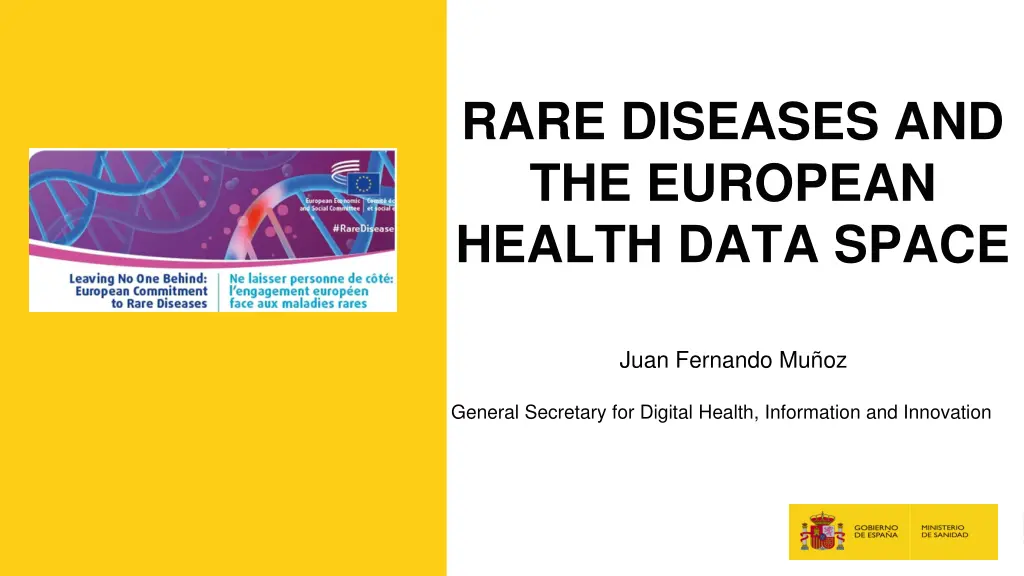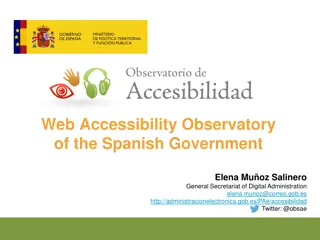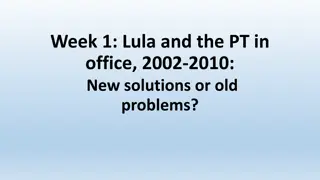
Future Regulation of European Health Data and Rare Diseases Insights
Explore the future European Health Data Space regulations, primary and secondary use fields, advancements in rare diseases identification, digital healthcare transformation, and innovative projects aiming to enhance patient care and research. Discover how patient control over data and collaborative efforts among healthcare professionals are shaping the future of healthcare in Europe.
Download Presentation

Please find below an Image/Link to download the presentation.
The content on the website is provided AS IS for your information and personal use only. It may not be sold, licensed, or shared on other websites without obtaining consent from the author. If you encounter any issues during the download, it is possible that the publisher has removed the file from their server.
You are allowed to download the files provided on this website for personal or commercial use, subject to the condition that they are used lawfully. All files are the property of their respective owners.
The content on the website is provided AS IS for your information and personal use only. It may not be sold, licensed, or shared on other websites without obtaining consent from the author.
E N D
Presentation Transcript
RARE DISEASES AND THE EUROPEAN HEALTH DATA SPACE Juan Fernando Mu oz General Secretary for Digital Health, Information and Innovation
The future Regulation of the European Health Data Area: Primary use Field New features introduced 1. 2. 3. 4. View data, add, and transfer data between healthcare providers Authorize representatives Know access to data Obtain copies and transfer between healthcare systems in EU-EHR format Natural persons Rights 1. 2. 3. 4. 5. Free Access service, with the possibility of representation Establish access standards by types of professionals Include eIDAS electronic identification Join MyHealth@UE Onboard all healthcare providers Obligations of States Public and Private Professionals and Care Providers 1. 2. Use compliant EHR systems and update data Join the national MyHEalth@UE system 1. 2. Manufacturers, representatives, importers Includes well-being apps, health products and high-risk AI systems, which declare interoperability with EHRs (self-declaration and voluntary label) compliant EHR systems, self-declaration Market 1. 2. Digital Health Authority National contact point for connection to MyHealth@EU Market Surveillance Authority (verification, risks and non-compliance, sanctions regarding the conformity of EHRs) with functions closer to the field of Consumer Affairs Entities 2
The future EHDS Regulation: Secondary use Field New features introduced 1. Data Access requests 2. Within the scope of the Regulation (applications via HDABs, permitted purposes, evaluation of applications, pseudonymised or anonymized data), consent is not necessary Person Rights (natural and legal) 1. Application management system and national data catalogue 2. Evaluation and processing of applications 3. Obligation of a safe treatment environment 4. Transnational collaboration and recognition (with other HDABs) Data Access Organizations 1. Describe, label data and communicate data access to authority 2. Provide the data requested by HDAB 3. The possibility of charging fees is contemplated Obligations of the Holders 1. 2. 3. Submit and justify requests, make results public, and return rich data Become co-responsible for the treatment Avoid prohibited uses, de-anonymization and transfer to third parties Obligations of the Users 1. A national data access agency(ies) is contemplated 2. Authorized participants and trusted data holders HealthData@EU (EDIC/ERIC) Entities 3 3
1) The European Health Data Space Primary use => patient control over their data and input of other data held by the patient, continuity of care, data sharing among healthcare professionals. Secondary use => new capabilities for research, a consistent framework for data usage throughout the EU, secure processing environments. Rare Diseases => faster and easier identification of patients / symptoms / characteristics => Diagnosis, Prognosis, Therapies Starting point to analyze: 24 ERN registries financed by EU4Health & European Platform on rare diseases registration (ERDRI) 1+Million Genomes Project 2) The digital transformation of healthcare Bringing healthcare closer to patients, especially the most vulnerable. Facilitating collaboration among professionals and care levels. Incorporating new technologies like AI supported by data in research, diagnosis, and personalized and continuous treatment (IoMT telemonitoring). Personalised Digital Care Plan NICAS Project, pediatric rare diseases care. SIGenES 4
Project Personalized Digital Care Plan: Use Case Caring for pediatric RR patients in any care node of the UNICAS network as an extension of the reference center for their pathology, regardless of the Region in which they reside . GOALS 2 PERSPECTIVES Provide comprehensive care through a network of 30 specialized centers. Move knoledge no Patients and Families Complement Reference Networks. Starting with pediatric patients with 4 type RD Healthcare profesional perspective Patient / family / caregivers perspective Provide these 30 UNIQUE network nodes with tools, processes and protocols to establish a Personalized Care Model on the UNIQUE NETWORK. UNICAS 360 UNICAS CHANNEL Coordinates Ministry of Health, co-leads Catalonia and Madrid. Catalonia will develop components on agreed technological architectures And focused on 4 types of diseases: Participating all Regions => +150 experts in functional groups and ICT Ministry of Health => Governance and data quality, information exchange services, Terminology and ontology servers, advanced analytics Syndromic neurodevelopm ental disorders Neuromuscular disorders Mitochondrial diseases Epileptic encephalopathies 5
Project PAC Plan use case NUMBER OF NODES BY AUTONOMOUS COMMUNITY AND THEIR ROLE 1 1 2 2 1 1 3 2 1 3 2 2 2 1 1 2 2 Leader responsible for tools development Participant Leader 6
European Health Data Space Challenges: the pioneer's problem Almost No Experience Funding Cross regulation: EHDS, IA, MD Quality of information: Garbage in -> Garbage out Shared problem with other areas Big efforts in Normalization, codification,.. Tools: Ontologies, AIG UE Harmonization (GDPR) Legal and ethical evaluation of request: Prioritization and social criteria Technical standardization: anonymization and pseudoanonymization trade-off between access to information and respect for intellectual property Technology acceleration acceleration and time of regulation regulation 7
Juan Fernando Muoz General Secretary for Digital Health, Information and Innovation Spanish Ministry of Health






















